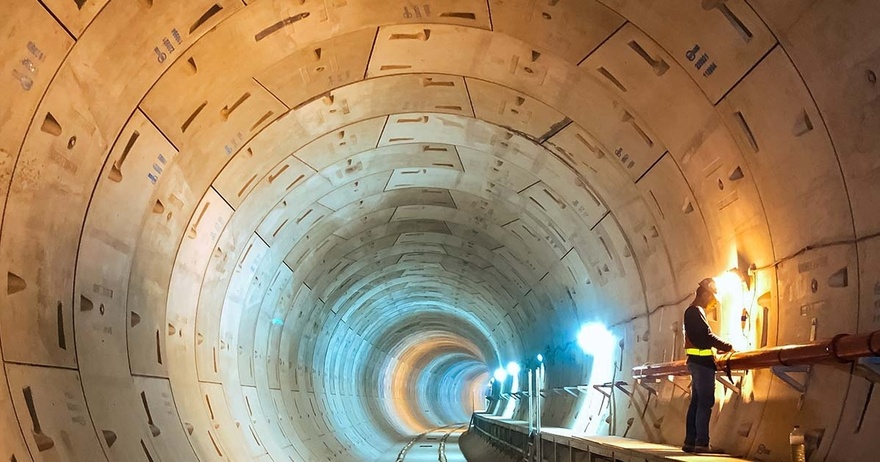Imagine a world where crossing the Atlantic Ocean was as simple as taking a train to work. This futuristic dream forms the foundation of a proposed transatlantic tunnel—a colossal engineering project that would connect the United States and the United Kingdom, slashing travel time to under an hour. With an estimated cost of £15.6 trillion (approximately $20 trillion), this venture symbolizes the audacious human spirit to transcend geographical limits and strengthen international ties.
The Age-Old Dream of a Transatlantic Tunnel

While the idea may sound cutting-edge, it is not new. The concept has existed for over a century, proposing an underwater passage stretching beneath the Atlantic Ocean’s vast expanse. For perspective, this undertaking dwarfs the Channel Tunnel, which connects England and France with its 23.5-mile stretch. The Channel Tunnel required six years of intense labor, whereas the Transatlantic Tunnel would span approximately 3,400 miles and dive several miles beneath the ocean’s surface.
Engineering Marvels: Theoretical Approaches to the Tunnel

Engineers and visionaries have brainstormed various ways to make this ambitious tunnel a reality. Proposed designs include constructing a pathway beneath the ocean floor, suspending a conduit above it, or employing a hybrid model. Another innovative idea involves a floating tunnel submerged 49 meters underwater. This structure would consist of prefabricated segments held in place by tension cables, balancing both the immense pressure of the ocean depths and the hazards of surface maritime activity.
High-Speed Travel: A Game-Changer for Transportation

The Transatlantic Tunnel’s primary function would be to facilitate high-speed train travel. Traditional car travel would be impractical, as the journey would take days and require complex infrastructure to support drivers. Instead, the proposed trains, known as vactrains, could travel at astonishing speeds of up to 5,000 mph.
This would reduce the trip from London to New York City to a mere 54 minutes. Other concepts, such as jet propulsion, have also been explored. Trains propelled by jet engines could reach similar speeds but would require an 18-minute deceleration period to ensure safe stops at their destinations.
Economic and Logistical Challenges

The staggering costs and logistical hurdles associated with the Transatlantic Tunnel have left it firmly in the realm of speculation. With no concrete proposals currently under consideration by governments, the project remains a theoretical exercise rather than a practical plan.
Other Underwater Tunnels on the Horizon

While the Transatlantic Tunnel may be a distant dream, similar underwater infrastructure projects are gaining traction elsewhere. One prominent example is the proposed tunnel linking Spain and Morocco across the Strait of Gibraltar.
The Europe-Africa Connection: A Feasible Alternative

The Strait of Gibraltar tunnel could bridge Europe and Africa by connecting Punta Paloma in Spain with Malabata in Morocco. This project would feature a 17-mile underwater stretch, descending to depths of 475 meters, making it a shorter and less daunting endeavor than the Transatlantic Tunnel.
Unlike the hypothetical transatlantic project, plans for the Gibraltar tunnel are more advanced. The Moroccan National Company for Strait Studies (SNED) is currently conducting feasibility studies to evaluate financial and logistical challenges. Estimated to cost £6 billion, including a third maintenance tunnel, this project is seen as a vital strategic link for both continents.
A Future Beyond Imagination

The Transatlantic Tunnel embodies humanity’s boundless ambition to innovate and connect. While its construction may seem out of reach, its conceptualization inspires advancements in engineering and fosters global discussions about the possibilities of such infrastructure. Until then, we can look to smaller yet equally transformative projects, like the Gibraltar tunnel, as a stepping stone toward realizing these grand dreams.
Wendy’s Reacts to Backlash Over Joke About Leaving Katy Perry in Space: ‘Always Bring a Little Spice’
Michael Bublé Is Living The Good Life With His Family In A Multi-Million Dollar Mansion In His Hometown.
Dolly Parton’s best duet yet: ‘There Was Jesus’
Grooving Groom Daniel Lewis’s Epic Dance Entrance With His Boys Makes Wedding Goes Viral.






























